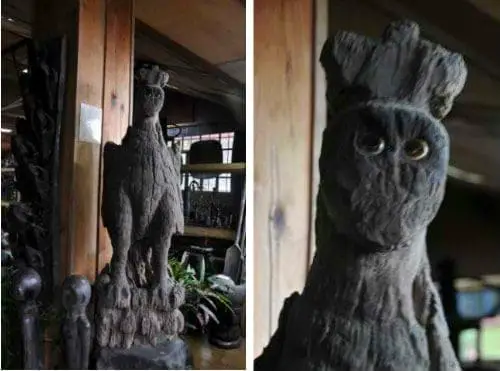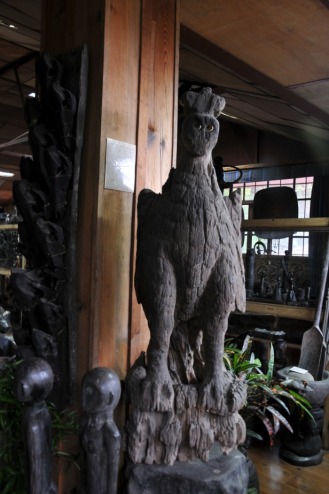
The Story of Owl Saint of Eastern Samar: A Tale of Religious Syncretism
In the tranquil town of Guiuan, nestled in the heart of Eastern Samar, there exists a unique statue known as Sto. Kulago. This statue, representing an owl, holds deep significance in the religious and cultural landscape of the region, symbolizing the intricate interplay between Christianity and indigenous beliefs.
Long before the arrival of the Spanish colonizers, owls held a sacred place in the beliefs of the native peoples of the Philippines. They were either revered as divine beings or feared as omens of misfortune. The owl's presence in the region's folklore predates the introduction of Christianity, indicating its profound influence on the indigenous spirituality.
Loading...
It is believed that the creator of Sto. Kulago blended his animist beliefs with the Christian faith, creating a symbol that resonated with both traditions. The owl, with its enigmatic allure, became a vessel for spiritual expression, embodying the rich tapestry of cultural heritage that defines the Philippines.
The reverence for owls extended beyond Eastern Samar, reaching distant regions such as Ifugao in the northern part of the country. In Ifugao culture, owls were depicted in the intricate carvings of tribal deities, known as Bulol, symbolizing their significance in indigenous belief systems.
Throughout the Philippines, the nocturnal cries of owls were often interpreted as omens, foretelling illness or death in the family or community. This deep-rooted superstition added to the mystique surrounding these creatures, elevating them to the realm of spiritual guardians and harbingers of fate.
The emergence of Sto. Kulago in Guiuan marked a pivotal moment in the region's religious history. Carved from the resilient wood of the molave tree during the Spanish era, the statue fused elements of animism and Catholicism, reflecting the complex religious landscape of the time.
ALSO READ: The Story of La Muerte in Cebu
Despite attempts to impose Christian orthodoxy, the cult of Sto. Kulago persisted, quietly thriving beneath the veneer of colonial rule. The statue became a focal point for worship, its enigmatic presence drawing devotees from far and wide.
However, tragedy struck in the 1980s when two children from the cult's flock succumbed to an unknown illness. Some believed that the owl, angered by perceived transgressions, had unleashed its wrath upon the community, prompting caution and reverence among the faithful.
ATTRACTIONS TO SEE IN MANILA
Klook.comToday, Guiuan stands as a testament to the enduring spirit of religious syncretism, where ancient beliefs intertwine with modern faiths to create a tapestry of cultural diversity. As the owl continues to watch over the town, its presence serves as a reminder of the rich heritage that binds the Filipino people together.
Guiuan, situated at the southeastern tip of Samar Island, remains a symbol of resilience and tradition in the face of changing times. Its shores bear witness to the ebb and flow of history, reflecting the enduring legacy of the Owl Saint and the enduring spirit of its people.













No comments
Let us know your thoughts!